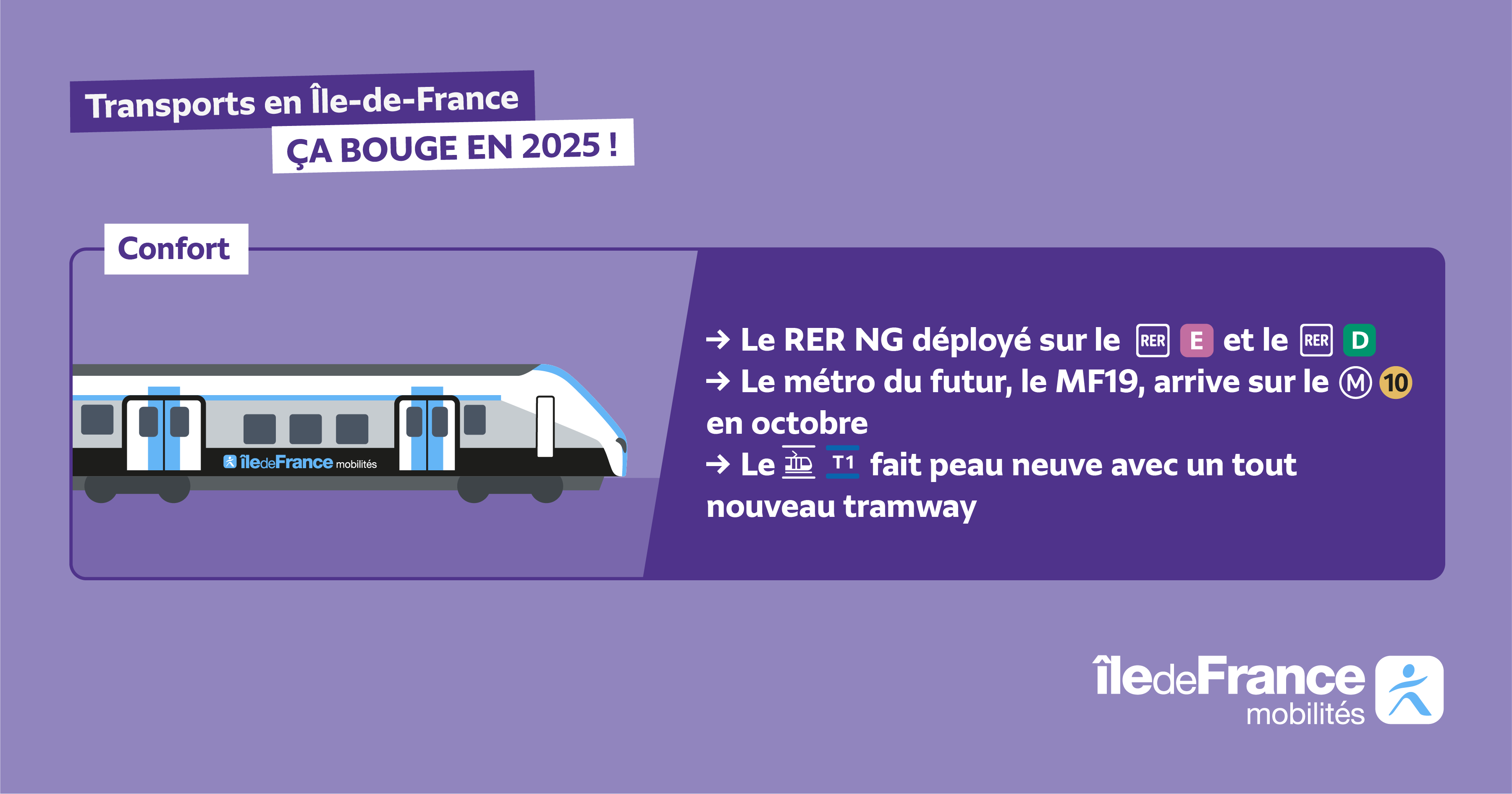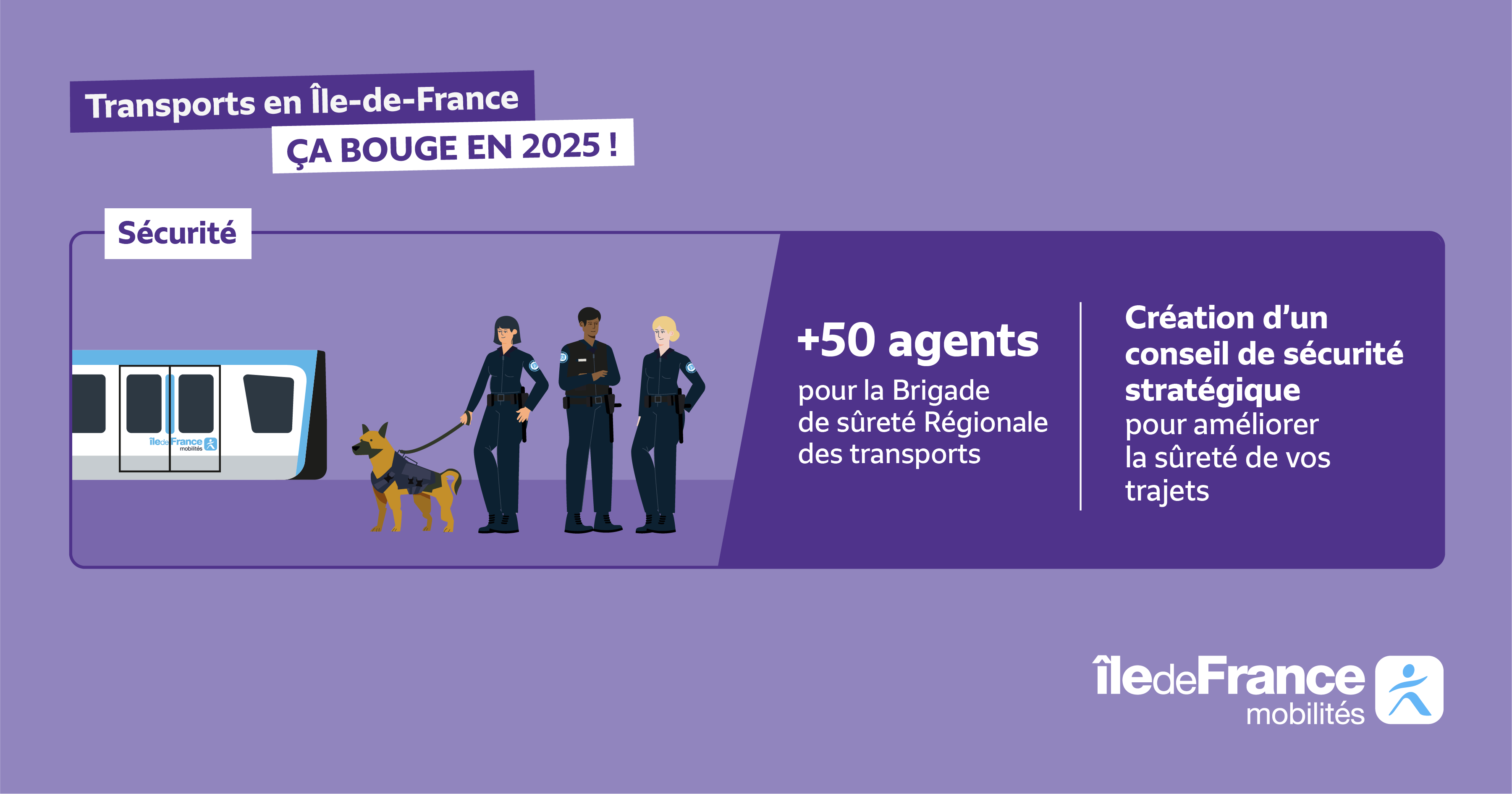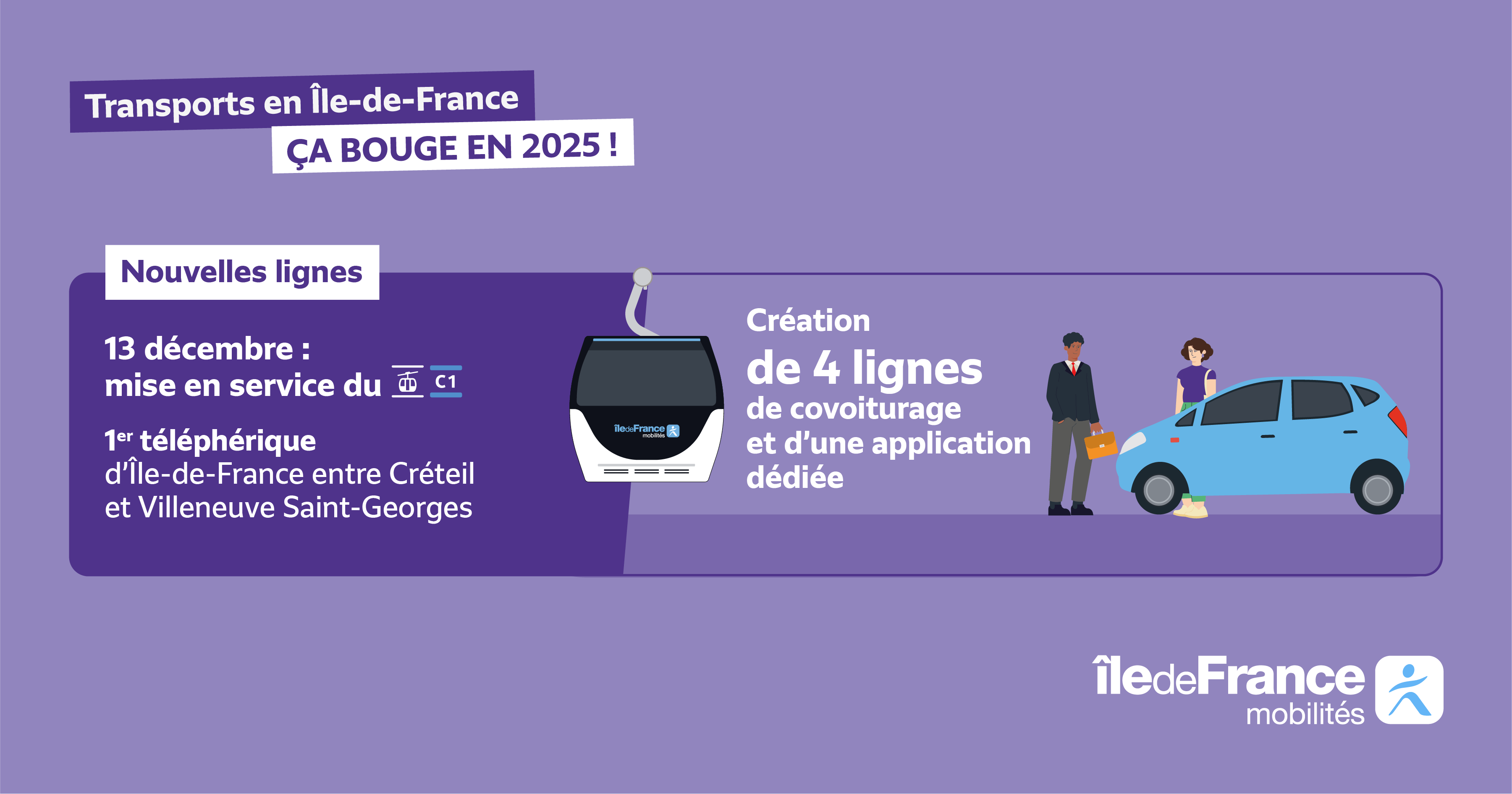Mobility plan: 14 actions to transform mobility by 2030
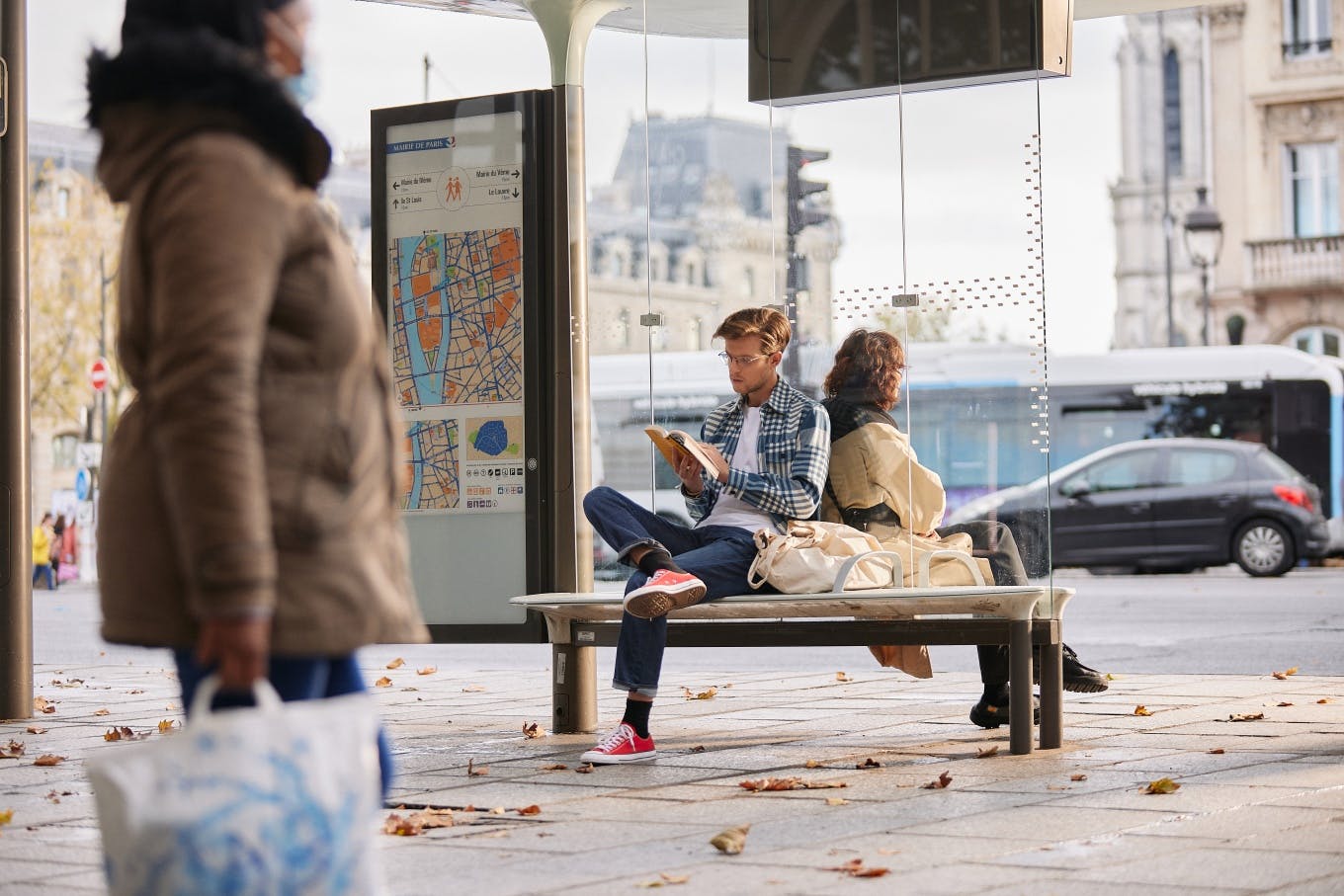
Île-de-France Mobilités has defined 14 main axes and 46 actions to rethink mobility by 2030 : this is the 2030 Mobility Plan.
From everyday transport to active mobility, including inclusion and the ecological transition, we present it to you point by point.
Priority 1 - Develop the use of public transport by making it more attractive
To achieve environmental goals, the use of public transit must continue to increase.
To make as many people as possible want to use them on a daily basis, the transport revolution continues with an ever safer, more efficient offer adapted to each territory and their inhabitants.
Axis n° 2 - Placing the pedestrian at the heart of mobility policies
Walking is good for your health, yes, and also for the environment.
So to encourage Ile-de-France residents to choose walking when they can, the plan plans to systematize the priority given to pedestrians in the development of public spaces and to improve their travel conditions with, for example, the creation of safer and more comfortable spaces and sidewalks (benches, lighting, greening, etc.).
Priority n°3 - Ensuring inclusive travel by making transport networks accessible
How?
- By accelerating the accessibility of roads in built-up areas (e.g. adapted sidewalks and pedestrian crossings) with an approach that takes into account the different types of hadicap
- By continuing to make the public transport network already underway accessible
Priority n°4 - Encouraging the use of bicycles

How?
- By making it easier and safer to practice on a daily basis, by developing cycle paths, by increasing the number of bicycle parking spaces in homes and offices, but also on the road and near train stations and transport stations ( Bicycle Parking)
- By promoting the bicycle and offering associated services such as the Véligo Location service, or the repair and electrification of one's bicycle
- By continuing to provide purchase subsidies to make the practice accessible to as many people as possible
Axis n° 5 - Supporting the shared use of the car

How?
- By encouraging and facilitating the practice of carpooling
- By regulating the quality of services of car-sharing operators
- By creating carpooling lines (especially in the outer suburbs, sometimes far from the public transport rail network).
Priority n° 6 - Facilitate the transition from one mode of transport to another for the same trip
To encourage Ile-de-France residents to choose sustainable mobility, it is necessary to ensure a fluid connection between the different modes of transport available in the region.
This is what we call intermodality and multimodality.
That is to say, to be able to switch from car, train, bus, bicycle, tram or metro, with ease, and this, for the same trip.
Axis 7 - Making the road more multimodal, safe and sustainable
How?
- By prioritizing and developing the road network for greater safety
- Implementing dedicated lanes for public transit and carpooling
- By improving the quality of service of all modes of transport on the road network
- By improving the environmental performance of the road network, in particular to adapt it to climate change and reduce noise for local residents
Priority n° 8 - Better sharing of the street between the different modes of transport

The goal? Effectively share urban traffic lanes between the different modes of transport, in favour of alternative modes to the private car (walking, cycling, public transport).
Priority n° 9 - Adapting parking policy to the different territories
Here, the objective is to adopt a global approach to parking policies. How?
- By dealing with both private spaces : by limiting the construction of car parking spaces in new buildings (offices, housing) in areas well served by transport
- And public parking on the street.
The goal? To ensure consistency with other mobility policies, in particular that of public transport, and between neighbouring municipalities.
Priority 10 - Supporting more sustainable and efficient territorial logistics
What does more sustainable territorial logistics look like?
- Optimising urban logistics and improving the organisation of delivery in the city: the last link in the chain for goods before arriving at their destination
- The energy transition of vehicles
- Or the implementation of freight transport by river or rail
Axis 11 - Accelerating the energy transition of vehicles
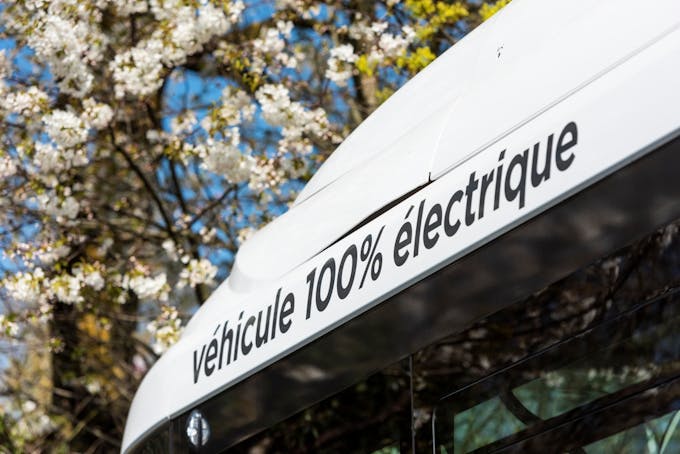
How? By:
- Purchase subsidies for less polluting vehicles
- The installation of electric charging stations
- The transition of Île-de-France Mobilités' fleet of buses and coaches to clean energy
- The development of refuelling with more sustainable energies (bioNGV, hydrogen, etc.)
With the Mobility Plan for 2030, the Île-de-France Region will be the first region in France on the path to carbon neutrality by 2050!
Priority 12 - Coordinating a solidarity policy for mobility services
How? By making mobility services accessible to the most economically vulnerable Ile-de-France residents (solidarity fares, eco-mobility aids, advice to facilitate mobility).
Priority 13 - Promoting more sustainable tourist mobility
The aim is to facilitate the mobility of tourists to travel around the Île-de-France region and visit tourist sites.
The goal? To provide options that improve the traveller experience and encourage them to use sustainable modes.
Axis n° 14 - Changing travel habits
This axis consists of acting on the behaviour of Ile-de-France residents to encourage them to adopt more sustainable mobility practices, in particular by targeting employers and schools.


